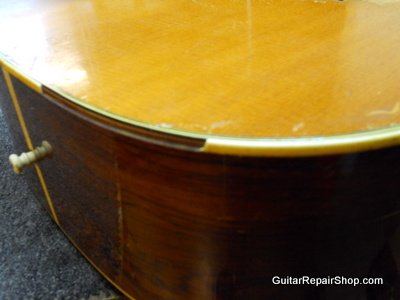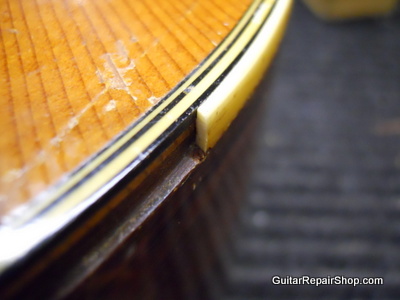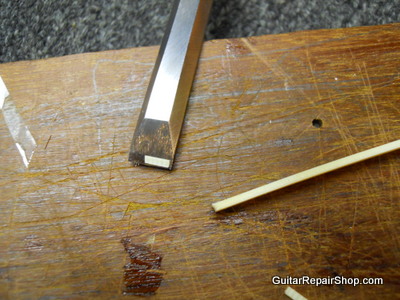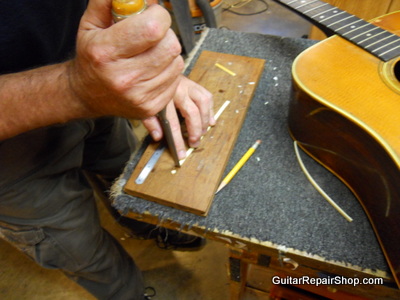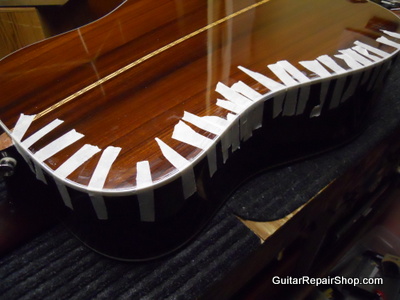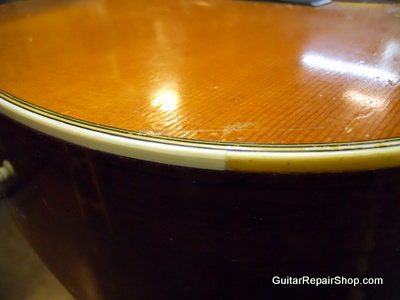|
| Repair Articles |
|---|
| Ask The Repairman |
| Repair Blue Book |
| Hardware Parts Accessories |
| Electronics |
| Guitar Wood and Kits |
| Tools |
| Friends |
|
|
|
|
|
Replacement of Missing BindingBy Steve Carmody c. 2015This Martin guitar was in the shop for repair of a section of missing top binding. If the broken piece had been saved it would have been straightforward to glue it back into place, but in this case the piece had been lost and it needed to be replaced. Here is how I did it:
The first step was to clean any old glue from the binding channel. I then squared up the edges of the binding gap with a sharp chisel to make it easier to fit a new piece. There was a natural flat edge to the left side of the missing binding where the two original pieces of top binding butted together above the endpin plate. On the right side of the gap I squared-up the edge and cut a 45 degree inward bevel to the binding edge. This can make for a slightly more elegant junction of the patch.
In this case the outer binding on the guitar was grained celluloid ivoroid so this was the material I used for the patch. The binding I had in the shop was the correct thickness to match what was on the guitar and it was slightly taller than necessary. This extra height would be removed in a later step. After measuring the length of the patch I squared up the left side of the patch and added a bevel to the right side. It can sometimes take a couple tries to get a patch to fit cleanly and using a sharp chisel is the key to getting a nice clean fit.
Once a good fit was achieved the patch was glued in. Standard yellow woodworkers glue such as Titebond was used but I also brushed on some thick super glue to the ends. The solvents in the super glue soften the plastic and helped to join the ends of new section to the existing binding. Thin strips of masking tape will suffice to hold most binding strips in place while glue dries. Below is picture of the procedure as done on another section of loose binding.
Once the glue was dry the tape was removed and the new binding was leveled and rounded over at the edge first with a single edge razor or scraper blade and then smoothed with 600 grit sandpaper.
Steve Carmody is an independant guitar repairman and luthier with a shop in Silver Spring, Md. He has been doing guitar repair and restoration full-time since 1990. Questions about this article or anything else related to guitar repair? Send e-mail to - GuitarRepairShop@aol.com |

